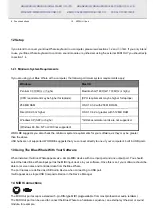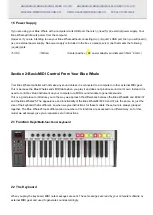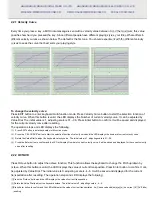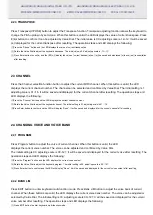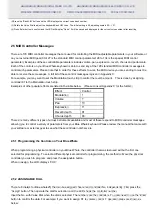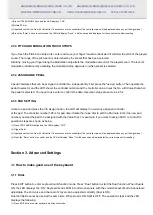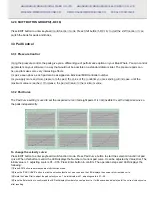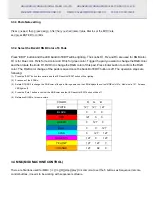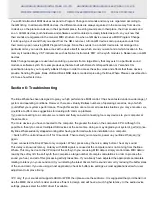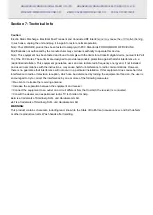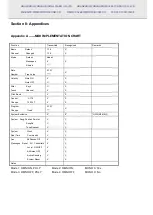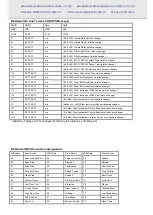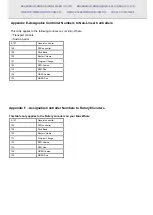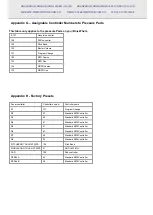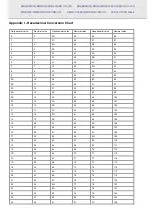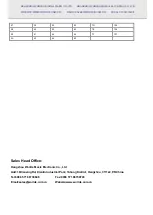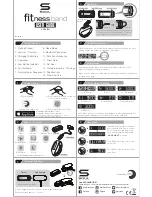
HANGZHOU WORLDE DIGITAL PIANO CO.,LTD HANGZHOU WORLDE MUSIC ELECTRONIC CO., LTD
WEBSITE: WWW.WORLDE.COM.CN EMAIL:[email protected] TEL:86 571 88730848
You will find almost all MIDI devices respond to Program Change commands and many are organized according to
the GM listing. In all General MIDI devices, the different sounds are always organized in the same way from device
to device, so the piano sounds are in their particular place, the string sounds are in their place, the drum sounds and
so on. All GM devices (both hardware and software sound modules) are clearly labeled as such, so you know that
their sounds are organized in the General MIDI structure. So when a GM device receives a MIDI Program Change,
it calls up a type of sound that you expect from the GM sound set. All non-GM devices call up unique sounds from
their memory upon receiving MIDI Program Changes. Since the sounds in a non-GM device are not arranged in a
particular order, you need to take a look at the device itself to see which sound you want and at which location in the
memory it resides. Many VST instruments such as Native Instruments’ FM7 or the synth modules in Reason are non-GM
devices.
Bank Change messages are useful when calling up sounds from a large library that may exist in a particular sound
module or software synth. For example devices that are built with Roland's GS specification or Yamaha's XG
specification require you to specify a Bank Change in order to access the extra voices and effects that these devices
provide. Sending Program, Bank LSB and Bank MSB data is made simple using the Blue Whale. Please consult section
2.4 to see how this is done.
Section 6: Troubleshooting
The Blue Whale has been designed to give you high performance MIDI control. It has been tested under a wide range of
system and operating conditions. However, there are virtually limitless numbers of operating scenarios, any of which
could affect your system’s performance. Though this section cannot cover all possible situations you may encounter, we
would like to offer some suggestions for dealing with common problems.
If you are connecting to a computer, we recommend that you avoid connecting too many devices to your computer at
the same time.
The more devices you have connected to the computer, the greater the load on the computer’s CPU. Although it is
possible in theory to connect multiple USB devices at the same time, doing so may degrade your system’s performance.
My Blue Whale suddenly stopped working after having performed well since installation on a computer:
<Switch off the unit and leave it off for 10 seconds. Then restart your computer, power up your Blue Whale and try
again.
I have connected the Blue Whale to my computer. When I press a key, there is a delay before I hear any sound.
This delay is known as latency. Latency with MIDI signals is caused at the computer and is not coming from the Blue
Whale. This may be due to the CPU load of the soft-synth you are using. MIDI data is simply control data. MIDI data is
read by the soft synth; the soft synth then completes a large number of complex calculations in order to produce the
sound you hear, and all of this processing activity takes time. If you already have adjusted the appropriate parameters
relating to latency on your sound card, try re-installing the latest drivers for the sound card, or try reducing the buffer sizes
of the sound card. If you are using a host application, check its buffer size settings as most applications allow for user
adjustment to improve timing.
<PC only: If your soundcard supports ASIO or WDM, then please use these drivers. It is suggested that you’d better not
use the MME driver which is older and less efficient in design and will have a much higher latency. In the audio device
settings, please select the ASIO driver if available.




